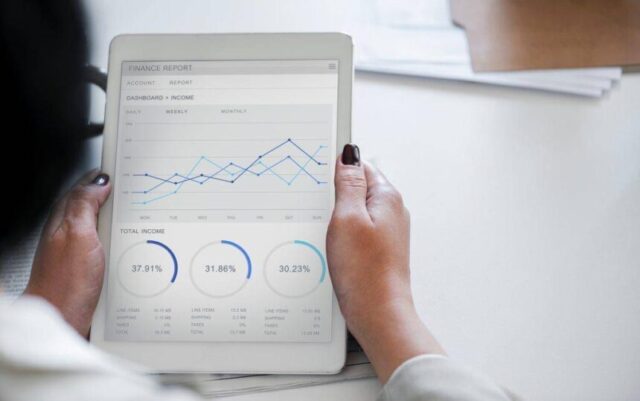Social media analytics is a powerful tool that can significantly enhance the effectiveness of your marketing campaigns. By understanding the performance of your content, audience engagement, and overall brand presence, you can make informed decisions that lead to improved results. Here’s how to effectively use social media analytics to boost your campaigns.

Table of Contents
Toggle1. Define Your Goals and KPIs
Before diving into analytics, establish clear goals for your campaigns. Whether you aim to increase brand awareness, drive traffic to your website, or generate leads, defining your objectives will help you focus on the right metrics.
Key Performance Indicators (KPIs) to Consider:
- Engagement Rate: Measures likes, shares, comments, and interactions relative to your follower count.
- Reach and Impressions: Indicates how many users saw your content and how often.
- Click-Through Rate (CTR): Measures the percentage of users who clicked on a link in your post.
- Conversion Rate: Indicates the percentage of users who completed a desired action, such as signing up or making a purchase.
2. Utilize Built-in Analytics Tools
Most social media platforms provide built-in analytics tools that offer insights into your content’s performance. Familiarize yourself with these tools to access valuable data:
- Facebook Insights: Offers metrics on post engagement, page performance, and audience demographics.
- Instagram Insights: Provides information on follower activity, post reach, and story performance.
- Twitter Analytics: Displays tweet impressions, engagement rates, and audience insights.
- LinkedIn Analytics: Provides insights into post engagement, follower demographics, and company page performance.
3. Analyze Audience Demographics
Understanding your audience is crucial for tailoring your content and campaigns. Use analytics to gather information on:
- Age and Gender: Identify which demographics are engaging most with your content.
- Location: Discover where your audience is located, which can inform your content strategy and timing.
- Interests: Gain insights into your audience’s interests to create relevant and engaging content.
4. Track Content Performance
Evaluate the performance of different types of content to determine what resonates most with your audience.
Key Areas to Analyze:
- Post Types: Compare the engagement rates of images, videos, stories, and links to see which formats perform best.
- Timing: Identify the days and times when your audience is most active and engaged, allowing you to optimize your posting schedule.
- Hashtags: Analyze the effectiveness of hashtags in increasing reach and engagement. Experiment with different hashtags to find the best combinations.
5. Monitor Engagement Metrics
Engagement metrics provide insights into how your audience interacts with your content. Regularly monitor these metrics to understand what drives engagement.
Key Metrics to Track:
- Likes and Reactions: Gauge the overall sentiment toward your content.
- Comments: Assess the volume and nature of comments to understand audience feedback and sentiment.
- Shares: Measure how often your content is shared, indicating its value and relevance to your audience.
6. A/B Testing
A/B testing allows you to compare two versions of a post or ad to see which performs better. This method helps you optimize your campaigns for maximum impact.
Steps for A/B Testing:
- Create Two Variants: Develop two versions of a post, varying one element (e.g., image, caption, call-to-action).
- Run the Test: Publish both versions simultaneously to a similar audience.
- Analyze Results: Compare engagement metrics to determine which variant performed better.
- Iterate: Use the insights gained to refine future content and campaigns.
7. Integrate Insights into Future Campaigns
Use the data gathered from your analytics to inform your future campaigns. This could involve:
- Refining Content Strategy: Focus on content types and topics that consistently perform well.
- Adjusting Targeting: Use audience insights to refine your targeting criteria for ads and content.
- Optimizing Posting Schedule: Adjust your posting times based on when your audience is most active.
8. Evaluate Competitor Performance
Analyzing competitor performance can provide valuable insights into industry trends and best practices. Use tools like Social Blade, BuzzSumo, or SEMrush to monitor competitor metrics.
Key Areas to Analyze:
- Content Strategy: Evaluate the types of content competitors are posting and their engagement levels.
- Audience Engagement: Assess how competitors interact with their audience and respond to feedback.
- Follower Growth: Track competitor growth to identify effective strategies that could be applied to your own campaigns.
9. Report and Share Insights
Regularly compile analytics reports to summarize your findings and share insights with your team. This practice encourages collaboration and helps align future strategies with data-driven decisions.
Key Elements to Include in Reports:
- Campaign Performance: Highlight key metrics and insights from recent campaigns.
- Audience Insights: Summarize demographic information and engagement trends.
- Recommendations: Provide actionable recommendations based on your analysis.
10. Stay Updated on Trends and Algorithm Changes
Social media platforms frequently update their algorithms and features, which can impact your campaigns. Stay informed about these changes and adjust your strategies accordingly.
Tips for Staying Updated:
- Follow Industry News: Subscribe to industry blogs, podcasts, and newsletters to keep abreast of trends.
- Participate in Webinars: Attend webinars and workshops to learn from experts and gain insights into best practices.
Conclusion
Social media analytics is a crucial component of successful marketing campaigns. By leveraging data insights, brands can optimize their content strategies, engage their audience more effectively, and drive better results. Regularly analyzing performance metrics and adjusting campaigns based on these insights will not only enhance your social media presence but also contribute to overall marketing success. Embrace analytics as an ongoing process, and watch your campaigns thrive.


No responses yet